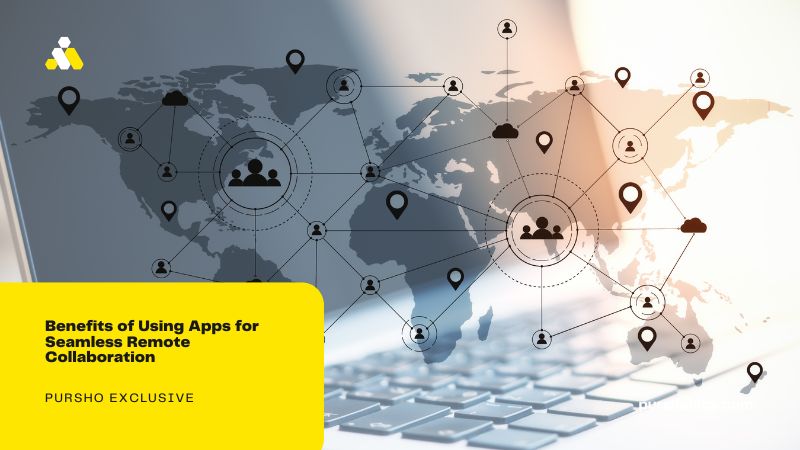Remote collaboration has become increasingly prevalent in today’s digital age, with teams spread across different locations working together seamlessly. As technology continues to advance, the reliance on collaboration apps has become indispensable for businesses aiming to maintain efficiency and productivity in remote work environments.
Introduction to Remote Collaboration
Remote collaboration refers to the process of individuals or teams working together on projects or tasks from different locations. It has revolutionized the way businesses operate, allowing for flexibility in work arrangements and access to global talent pools.
Challenges of Remote Collaboration
While remote collaboration offers numerous benefits, it also presents challenges such as communication barriers, lack of real-time interaction, and difficulty in coordinating tasks effectively. These challenges can hinder productivity and result in misunderstandings among team members.
What Are Collaboration Apps?
Collaboration apps, also known as team collaboration software, are platforms designed to facilitate communication, project management, file sharing, and task delegation among remote teams. These apps provide a centralized hub for team members to collaborate effectively, regardless of their location.
Benefits of Using Collaboration Apps
Improved Communication
Collaboration apps offer various communication channels, including instant messaging, video conferencing, and virtual meeting rooms, enabling real-time interaction among team members. This fosters better collaboration and ensures that everyone stays informed and connected.
Enhanced Productivity
By providing features such as task tracking, file sharing, and document collaboration, collaboration apps streamline workflows and eliminate the need for lengthy email threads or scattered communication channels. This enhances productivity by keeping all project-related information organized and accessible.
Streamlined Project Management
Collaboration apps often include project management tools such as task lists, deadlines, and progress tracking, allowing teams to efficiently manage projects from start to finish. This ensures that everyone is aligned on project goals and timelines, reducing the risk of delays or miscommunications.
Accessible Anytime, Anywhere
One of the key advantages of collaboration apps is their accessibility across devices and platforms. Team members can collaborate from anywhere with an internet connection, whether they’re working from home, traveling, or in different time zones. This flexibility enables seamless collaboration without geographical limitations.
Integration of Tools and Resources
Many collaboration apps offer integrations with other productivity tools and resources, such as cloud storage platforms, project management software, and communication tools. This integration simplifies workflows and allows teams to leverage their existing tools within a single interface, enhancing efficiency and collaboration.
Examples of Popular Collaboration Apps
Some popular collaboration apps include Slack, Microsoft Teams, Zoom, Trello, Asana, and Google Workspace (formerly G Suite). These apps offer a wide range of features tailored to the needs of remote teams, making them indispensable tools for modern businesses.
Factors to Consider When Choosing a Collaboration App
When selecting a collaboration app for your team, consider factors such as user interface, scalability, security features, integration capabilities, and pricing. It’s essential to choose a platform that aligns with your team’s specific needs and workflow requirements.
Tips for Effective Use of Collaboration Apps
To maximize the benefits of collaboration apps, establish clear communication protocols, set expectations for usage, provide training and support for team members, and regularly review and optimize workflows. Additionally, encourage open communication and feedback to ensure continuous improvement.
Case Studies of Successful Remote Teams
Numerous companies have successfully embraced remote collaboration and achieved impressive results. Case studies highlight how organizations have overcome challenges, improved efficiency, and fostered a culture of collaboration through the use of collaboration apps.
Overcoming Common Obstacles in Remote Collaboration
Despite its benefits, remote collaboration can present challenges such as cultural differences, time zone discrepancies, and technological barriers. By implementing effective communication strategies, fostering trust among team members, and addressing potential issues proactively, these obstacles can be overcome.
Future Trends in Remote Collaboration
As technology continues to evolve, remote collaboration is expected to become even more sophisticated and seamless. Trends such as artificial intelligence, virtual reality, and augmented reality are poised to transform the way teams collaborate, offering new opportunities for innovation and efficiency.
Conclusion
In conclusion, the benefits of using apps for seamless remote collaboration are undeniable. From improved communication and enhanced productivity to streamlined project management and accessibility, collaboration apps empower remote teams to work more effectively and efficiently. By embracing these tools and implementing best practices, businesses can thrive in the era of remote work.
FAQs
Are collaboration apps suitable for all types of teams?
Collaboration apps can benefit teams of various sizes and industries, although specific features and functionalities may vary based on the team’s needs.
How can I ensure data security when using collaboration apps?
It’s essential to choose reputable collaboration apps that offer robust security features such as end-to-end encryption, user authentication, and data encryption at rest and in transit.
What role does leadership play in fostering effective remote collaboration? Strong leadership is crucial in setting clear goals, communicating expectations, and establishing a culture of trust and accountability within remote teams.
Can collaboration apps replace face-to-face interactions entirely?
While collaboration apps offer convenient alternatives to face-to-face interactions, they should complement rather than replace in-person communication, especially for building relationships and fostering creativity.
How can I measure the ROI of implementing collaboration apps in my organization?
ROI metrics for collaboration apps may include increased productivity, reduced time spent on meetings, improved project delivery times, and enhanced employee satisfaction and retention. Tracking these metrics can help assess the effectiveness of collaboration tools in achieving organizational goals.




